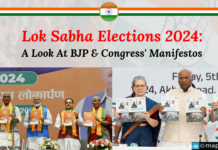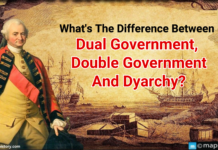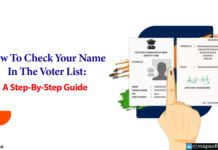After banning the ‘84 kos parikrama yatra’ proposed by the VHP, the state government in the most populous and politically, the most critical state, can hardly seat back and take note of the situation. The yatra was supposed to be held from 25th august to 13th September, a fortnight which will mark the onset of the festive season for the year with the onset of Ganesh Chaturthi. The controversial Vishwa Hindu Parishad (VHP) leader, Ashok Singhal had also conducted a meeting with the Samajwadi Party Chief supremo, Mulayam Singh Yadav, popularly known as ‘Netaji’ in the political circles of the state of Uttar Pradesh. However, at the behest of the minority mascot of the SP, Mohammed Azam Khan, the yatra was immediately banned. The decision by the state government to ban the yatra sent a shock wave to the right wing activist groups like VHP and Bajrang Dal, whose members defied the ban and came on to the streets resulting in the arrests of around 2000 members.
The question to be asked is whether this new fuel of communal politics is to be attributed to Narendra Modi and his commander in chief in UP, Amit Shah. The Narendra Modi (NaMo) factor has been generating a political wave across the country and the state which is said to contain the key to the office in 7 Race Course in New Delhi is also not untouched. People not only from the urban centres like Lucknow and Varanasi have been talking in support of Modi but underdeveloped and backward areas like Azamgarh too have been swept by the NaMo wave. The past records and the closeness of the Gujarat CM with hard-line groups like the RSS and the VHP, it would be surprising if his role is overlooked and the plan in polarizing the UP votebank.
It is interesting to note that the BJP on the contrary have been suffering political reverses in the state which during the NDA rule was its stronghold. In 2009 general elections, the party could wrest only 10 of the total 80 seats in the state. However, what was even more disturbing for the partymen was the percentage share of votes the party candidates could win. The BJP could win only around 16 % of the total votes. The Congress gained heavily winning around 23 seats, higher than the regional bigwigs, SP and BSP. In the subsequent assembly elections too, the baton to lead the party was passed into the hands of the old but fading Hindu godmother, Uma Bharti. The party did not fare well becoming a distant third, ahead of only the Congress. The two local jaggernauts, the Samajwadi Party and the Bahujan Samaj Party, were clearly ahead of the BJP. However, if the BJP is to raise a stake in forming the government at the centre in 2014, UP can no longer be kept at bay. Consequently, immediately when Narendra Modi was handed over the charge of leading the campaign across the country for the 2014 elections, NaMo wasted no time and assigned the task of handling UP to his most trusted aide and former Gujarat Home Minister, Amit Shah. It would be interesting to note that Shah is a prime accused in the Shohrabuddin murder case and is out on bail. Fearing that he might interfere in the investigations of the case, the Supreme Court has even ordered a ban on Shah’s entry into Gujarat till further orders. Nonetheless, Shah is currently active in designing the 2014 campaign for his mentor in chief, NaMo.
With elections still about eight months away, the political mood in UP is also somewhat bewildering. The people are desperate to welcome the developmental politics of NaMo and want UP to follow in the footsteps of the Gujarat development model. However, the party to which he belongs, the BJP, is engulfed in weakness in leadership in the state. Veterans like Murli Manohar Joshi and state president LJ Bajpai, have been unable to bring the party and the cadre at the forefront. People who have been working in Gujarat have been strong advocates of the Modi factor. The urban centres like Lucknow and Varanasi which are considered to be strongholds of the BJP, have been swept by the Modi wave. Even in the urban strongholds of the SP like Mainpuri, Kannauj and Farrukhabad in Etawah, support for Modi is on the rise. The 2002 Gujarat carnage is considered to be a story of the past and the people in these regions have limited their emotions to blame Modi for the massacre as the matter is still under the judicial probe.
Some belonging to the minority bastions like Azamgarh have even expressed their desire to give Modi a chance and transform UP into a next Gujarat as for these people who have been repeatedly cheated by parties like Congress and their votebank politics, development is the sole agenda. People in urban centres like Gorakhpur have been furious with the infrastructure present in the town, especially the roads and want to see the change in the form of NaMo and the developmental politics. As a result, Shah has been marching along with his campaign strategies in the state. Under his leadership, the large state has been divided into six zones. These are Braj, Bareilly, Pashchim (west), Awadh (central part), Varanasi and Gorakhpur (east) and the area of Bundelkhand in the southwest. The focus of the campaign has been designed in such a manner so as to maintain the focus on regional issues and solutions to address them. In addition, there are speculations that Modi himself might fight either from Lucknow or Varanasi in 2014. The former PM, AB Vajpayee, had last contested from Lucknow.
Whatever be the outcome, it seems NaMo is in no mood to let UP get away from his radar as it is this state which will determine whether he will change the fortunes of the BJP and bring in the change at the centre or will be limited to the barricades of Gandhinagar.




